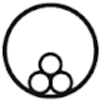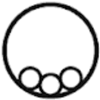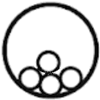The service reliability of a cable systems depends not only on the quality of the cable itself, but also to a large extent on the methods used and the care taken in laying the cable. In this blog post we list some things you should consider.
Posted 2018-02-27
Categories: Theory
The service reliability of a cable systems depends not only on the quality of the cable itself, but also to a large extent on the methods used and the care taken in laying the cable. It is very important to adopt correct procedures when transporting and laying the cable.
We have made a list of important things to consider when planning the cable system. The information was taken from various sources:
Always respect the following four important cable laying commandments. With our cable pulling calculation tool you can cover the first three commandments during planing.
Cables are normally shipped on cable drums/reels. The dimensions of the drum are dictated by the cable length and the cable diameter. The minimum core diameter of the drum must at least have the following dimensions ($D_e$ is the overall diameter of the cable).
| Single core cable | Diameter |
|---|---|
| Low voltage cable | $20\cdot D_e$ |
| Medium voltage cable | $25\cdot D_e$ |
| High voltage cable | $25\cdot D_e$ |
| Multi core cable | |
| Polymer insulated cable | $20\cdot D_e$ |
| Paper insulated cable | $25\cdot D_e$ |
Cable routes should be planned as straight as possible and sharp bends within the route should be avoided. At the terminal points sufficient space has to be allocated for setting up the cable reels and pulling machine.
In cities - and more and more also in rural areas - cables are laid in conduits/raceways such as ducts made of polyethylene (PE), polypropylene (PP) or polyvinylchlorid (PVC). Due to the small coefficient of friction between cable and conduit even long cable runs can be realized without control pits. In addition, the conduit system may be installed in sections at any time in advance, preferably together with other civil works, and there is no need to keep the cable trench open until the cable is laid.
At elevated operating temperatures the cables will elongate. This elongation must take place within the conduit and hence anchor clamps have to be installed in the joint pits. The internal diameter of the conduit should have the following dimensions:
| With 1 cable in conduit | 1.4 to 2.0 times the cable overall diameter $D_e$ |
| With 2 or 3 cables in conduit | 2.6 to 3.5 times the cable overall diameter $D_e$ |
Cableizer will tell you the factor between inner diameter $Di_d$ of the conduit and the cable outer diameter $D_e$ and give a warning if the ratio is too small. It will also prohibit you from placing impossible configurations (e.g. a cable that is larger than the inner diameter of the conduit).
It may not seem important, but each cable's geometric position in the conduit has a unique effect on the amount of frictional force the conductors endure during the pull. In addition, the positioning affects the weight factor. By using the ratio of the conduit's inside diameter ($Di_d$) to the cable's outside diameter ($D_e$), you can find what geometric position you can expect to see. For one and two cables the position is easy to predict but for three cables there are two possible positions.
| Triangular | This occurs when you pull three individual cables from three separate drums, and their ratio $Di_d/D_e$ is <2.5. If you pull individual triplexed cables without extra common outer sheath from a single drum, the multiconductor cable will also sit in this position. |  |
|---|---|---|
| Cradled | This position may occur when you pull three individual cables from three separate drums, and their ratio $Di_d/D_e$ is between 2.5 and 3.0. This position is the least favorable because it yields the worst-case scenario of drag during the pull. |  |
| Diamond | This position occurs when you pull four individual cables from four separate drums, and their ratio $Di_d/D_e$ is <3.0. If you pull quadruplexed individual cables without extra common outer sheath from a single drum, the multiconductor cable will also sit in this position. |  |
Knowing the cable positioning, it's necessary to determine how the cables' weight will affect the pull. The weight correction factor is important because when you pull two or more cables in a conduit, the sum of the forces developed between the cables and the conduit is always greater than the sum of the individual cable weights.
The equations in the following table for determining weight correction factor for specific installations are based on the inside diameter of the conduit and the outside diameter of the cable. When you have three single-core cables of equal diameter and weight (which is the most common scenario), you can expect a higher weight factor for the cradle position than the triangular position. To be on the safe side, you should assume the cables would sit in the cradle position. Note that calculation of the weight factor is not yet implemented in Cableizer.
| No. of conductors | Position | Weight Factor Equation |
|---|---|---|
| 1 | Single | $W=1$ |
| 2 | Double | $W=1$ |
| 3 | Triangular | $W = \frac{1}{\sqrt{- \frac{D_{e}^{2}}{\left(- D_{e} + Di_{d}\right)^{2}} + 1}}$ |
| 3 | Cradled | $W = \frac{4 D_{e}^{2}}{3 \left(- D_{e} + Di_{d}\right)^{2}} + 1$ |
| 4 | Diamond | $W = \frac{2 D_{e}^{2}}{\left(- D_{e} + Di_{d}\right)^{2}} + 1$ |
After completion of civil works the conduit system must be calibrated and equipped with a plastic rope. The calibre has a specified diameter which will ensure that the maximum deformation of the conduit does not exceed 10%.
The dimension of the conduit is usually standardized in each country and such is the calibre. Values for Switzerland for example:
| Conduit inner/outer diameter [mm] | 60/72 | 80/92 | 100/112 | 120/132 | 150/163 | 200/214 |
|---|---|---|---|---|---|---|
| Diameter of calibre [mm] | 54 | 72 | 90 | 108 | 138 | 175 |
| Length of calibre [mm] | 118 | 118 | 185 | 185 | 185 | 185 |
| Length of 30° chamfer [mm] | 10 | 15 | 20 | 25 | 30 | 30 |
And the values for Germany as another example follow below (source: Telekom ZTV 40). Note that for some sizes there are different values of wall thickness available.
| Conduit outer diameter [mm] | 32 | 50 | 110 | 125 | 140 | 160 | |||||
|---|---|---|---|---|---|---|---|---|---|---|---|
| Wall thickness [mm] | 2.0 | 2.4 | 1.8 | 6.3 | 4.3 | 7.1 | 4.9 | 5.4 | 9.1 | 6.2 | 4.9 |
| Diameter of calibre [mm] | 25 | 35 | 40 | 90 | 95 | 110 | 115 | 130 | 135 | 140 | 145 |
| Length of calibre [mm] | 200 | 200 | 200 | 200 | 200 | 200 | 200 | 200 | 200 | 200 | 200 |